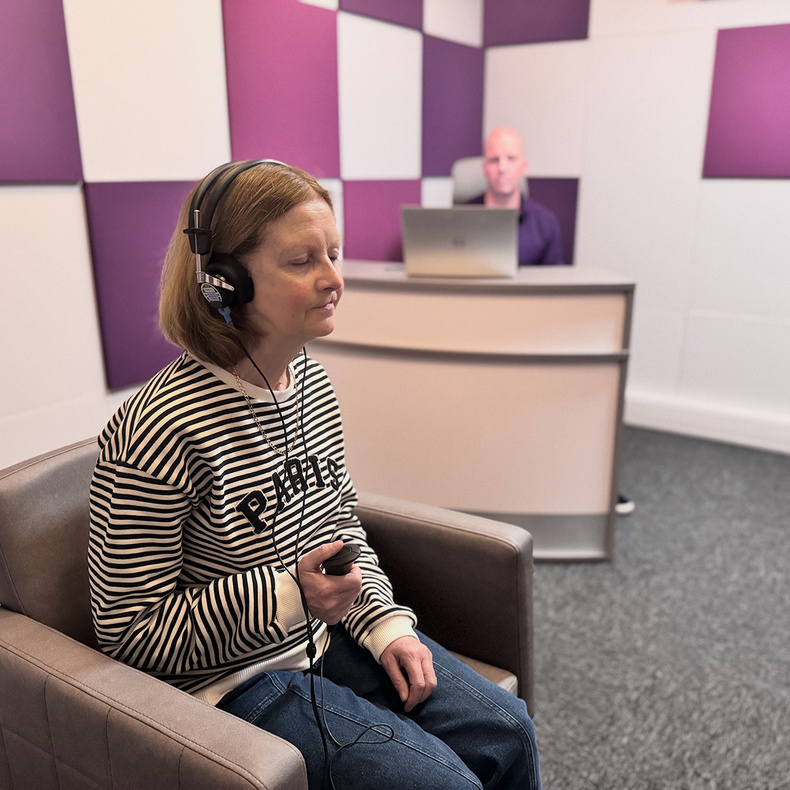Is it ear wax or something else? How to spot the difference

Written by Steven Hale from Steven Hale Hearing
It’s common to blame blocked or muffled hearing on ear wax, and often, that’s exactly what it is. But sometimes, the issue might not be wax at all. So how do you know the difference?
At Steven Hale Hearing, we see clients every day who aren’t sure what’s going on inside their ears.
You might feel confused, nervous or even dreading your appointment, and that’s completely normal. There’s nothing to worry about and to get you ahead of your appointment, here’s a simple guide to help you understand what might be causing your symptoms, and when to book a professional check-up.
Common signs of ear wax build-up
Ear wax is a natural, protective substance produced in the ear canal to help keep infections and foreign bodies at bay, but sometimes it can build up and cause issues. You might be dealing with excess wax if you experience:
• Muffled or reduced hearing in one or both ears
• A feeling of fullness or blockage
• Itchy ears
• Tinnitus (bothersome ringing in the ears)
• Mild dizziness or imbalance
• Sudden improvement after using olive oil drops
These are all signs that wax might be sitting in your ear canal and blocking sound from reaching the eardrum.
But sometimes it’s not wax
Not all ear-related symptoms are caused by wax. If you’re experiencing any of the following, it could be something else:
• Sharp or persistent ear pain
• Discharge from the ear
• A sudden drop in hearing with no improvement
• Dizziness or vertigo that comes on suddenly
• A sensation of pressure with cold/flu symptoms
• Crackling or popping with no relief from drops
These could be signs of a middle ear infection, fluid behind the eardrum, Eustachian tube dysfunction, or even early hearing loss. That’s why it’s so important to have your ears looked at properly.
Why a professional ear check matters
Trying to guess what’s going on in your ears, or using cotton buds to ‘check’ can do more harm than good.
At Steven Hale Hearing, we use a video otoscope to safely look inside your ears.
This lets us see whether there’s wax, an infection, or any other issue, and decide on the safest treatment. We know it’s tempting to purchase home remedies and tools online but these can can be dangerous and often cause more problems!
If wax is present, we offer gentle microsuction, irrigation or manual tools, depending on the location and texture of the blockage. If no wax is found, we’ll give clear advice on what steps to take next, whether that’s referral advice, a hearing test, or monitoring your symptoms.
If you want reassurance and a better idea of what happens during the appointment you can watch our walkthrough video on our YouTube channel
When to book in
If it’s been more than 12 months since your last ear check or you’re experiencing symptoms that aren’t clearing up, it’s a good idea to get your ears looked at by us at Steven Hale Hearing.
If you leave it until you’re fully blocked up, the procedure can take more time. We recommend getting a routine checkup to prevent excessive wax build up and to not overuse olive oil.
Even if you don’t need wax removal, a routine ear health check can provide peace of mind and catch any small issues before they become bigger problems.
Book your ear check with Steven Hale Hearing today at either our Lichfield clinic or Sutton Coldfield clinic in the Ashfurlong Medical Centre.
We’re here to help you hear clearly, comfortably, and with confidence.
